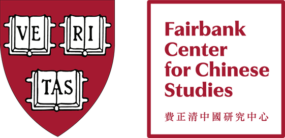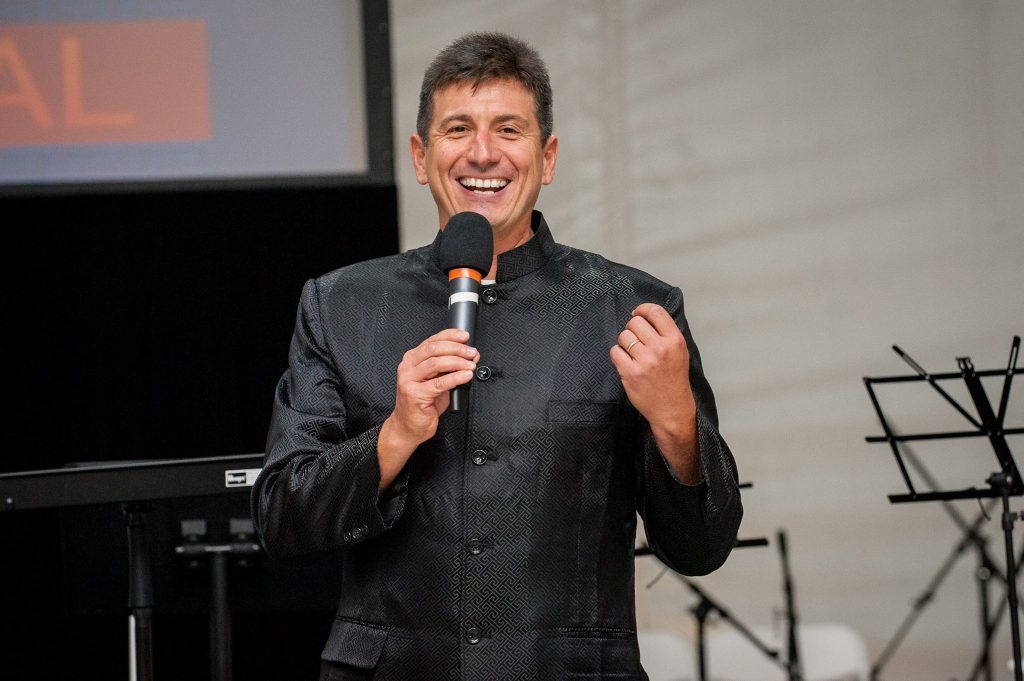Director Michael A. Szonyi provides his insights on the past academic year
A year ago, I suggested that we should use the 60th Anniversary of the founding of the Fairbank Center’s predecessor, the Center for East Asian Research, as an opportunity for our community to reflect on the past, present and future of Chinese Studies at Harvard, in the United States, and globally. I am pleased and grateful that this is precisely how many of the events of the busy fall semester unfolded.
For much of the semester, those of us who study, teach or participate in events at CGIS were reminded daily of the past, as we walked by the exhibition of the paintings of Wilma Cannon Fairbank. At a Gala Dinner celebrating our 60th Anniversary, we were honored to be joined by the Center’s “First Family”, John and Wilma Fairbank’s daughters Holly and Laura. We were also graced by a speech by Wilma’s sister, centenarian Marian Cannon Schlesinger, who spun yarns about Beijing life with the Fairbanks in the 1930s and whose paintings were also exhibited. Reflecting on the Center’s six decades of studying China, our keynote speaker at the event, National Committee on U.S.-China Relations President Stephen Orlins, reminded us of the ways in which the work of the Fairbank Center supports not only the advancement of knowledge but also the development of healthy US-China relations.
The Gala was held as part of our two-day 60th Anniversary Symposium. It drew experts from Harvard and beyond to reflect on critical issues confronting China and Chinese Studies. I was especially struck by some fascinating discussions on the ever-increasing diversity of approaches that comprise Chinese Studies today. Chinese Studies in the twenty-first centuries still means research in our traditional strengths in fields such as politics, history, and literature. But today it also includes environmental studies, medical anthropology, even robotics. Scholars at the Center still visit the Harvard-Yenching library to read rare books. But they also use WeChat and big data. Deciding how best to bring the hundreds of Harvard and Boston-area faculty and thousands of students who work on China under the umbrella of the Fairbank Center – and indeed whether this should be our goal – is a question we will continue to explore in the coming year.
Several participants at the symposium stressed that scholarship cannot be isolated from the world beyond the university. As part of a renewed commitment to public outreach, we transformed our celebration of the Mid-Autumn Festival into an event for the larger community, featuring artistic performances, cultural activities, short incisive lectures by Fairbank Center faculty and (until it ran out) seasonal food. This was the largest event ever held by the Center (which is why the food ran out). More than a thousand people joined us under the tent in the Science Center Plaza.
Other special events linked to the 60th anniversary included the launch of a new website and a number of important conferences, one on new directions in Sinophone Studies and another on the Tang poet Du Fu. As the year drew to a close, we launched a new partnership with Sichuan University. The outcome of years of work by Professor Leonard van der Kujip, the new partnership will provide opportunities for Harvard students and faculty to conduct research in China’s western regions. It speaks to the close collaboration with Chinese colleagues that has now become part of how we do business.
When I wrote my first message as the incoming director of the Fairbank Center in January 2016, I proposed that the changing role of the Fairbank Center over the last sixty years needed to be understood in terms of changes in China, changes in Sino-US relations, and changes in Chinese studies over the same period. At that time, my overall assessment of all three of these phenomena was generally positive. Today I find I am much more pessimistic about the situation for two of the three. But this should only make us rededicate ourselves to the third in the year ahead.

